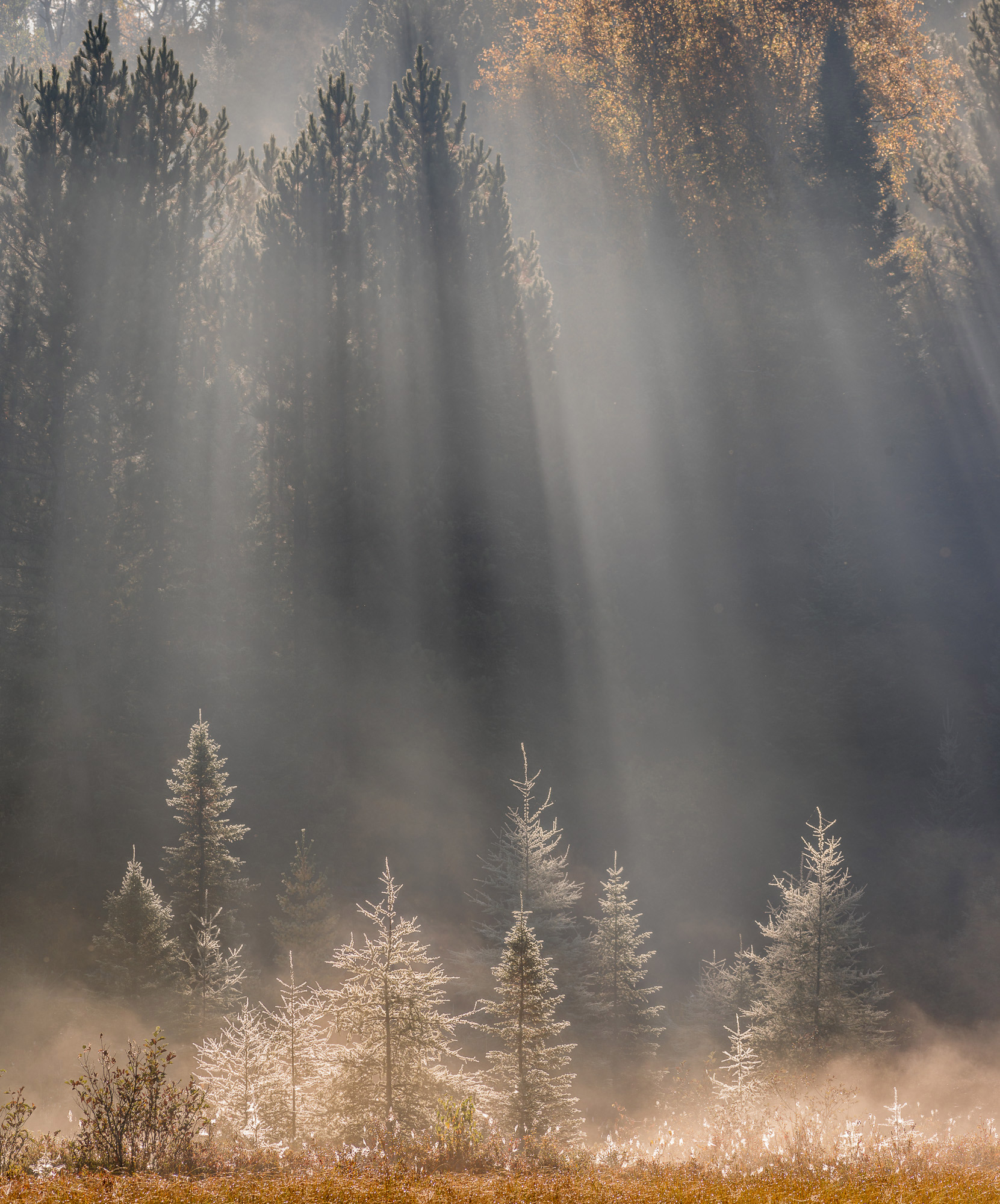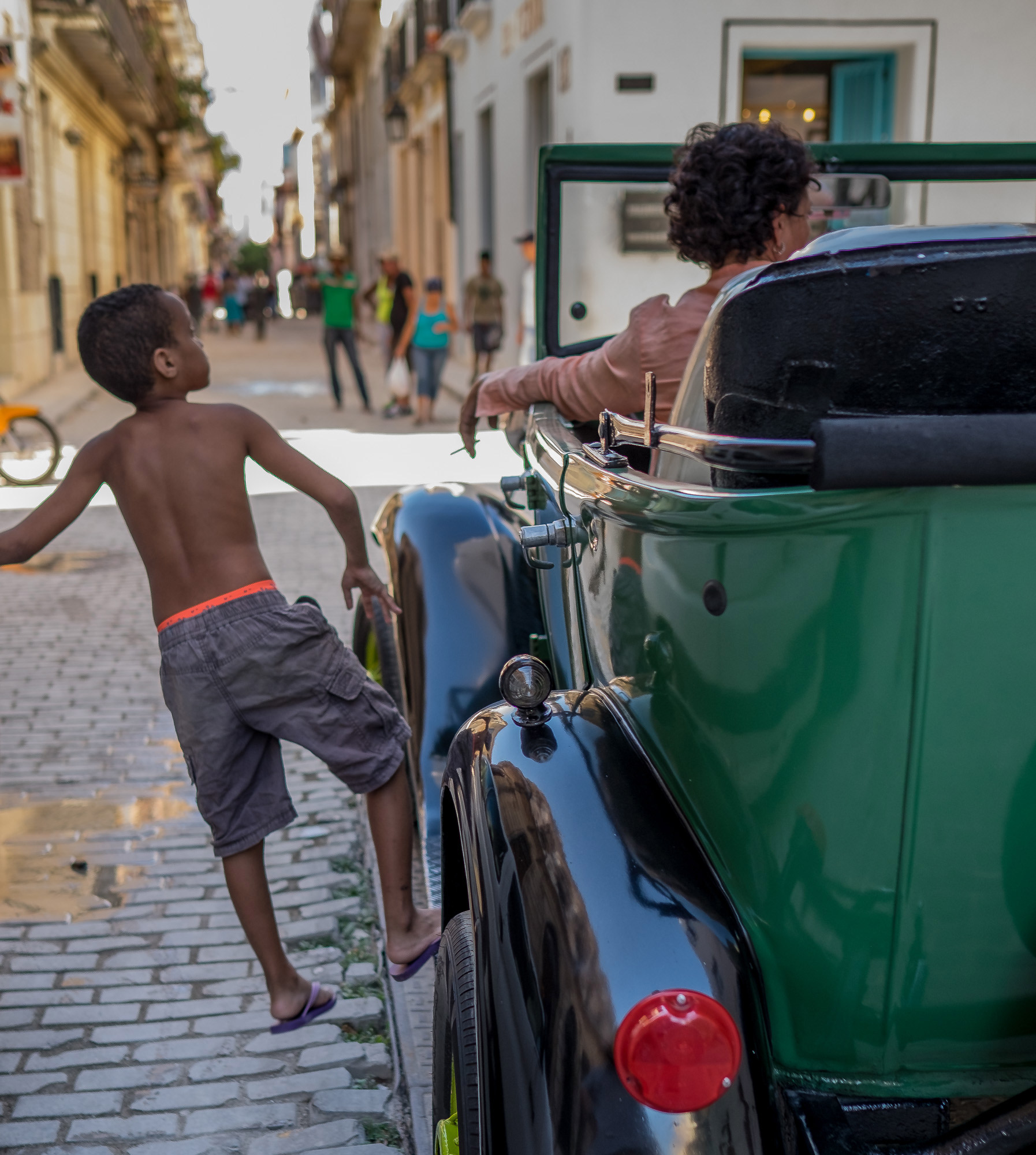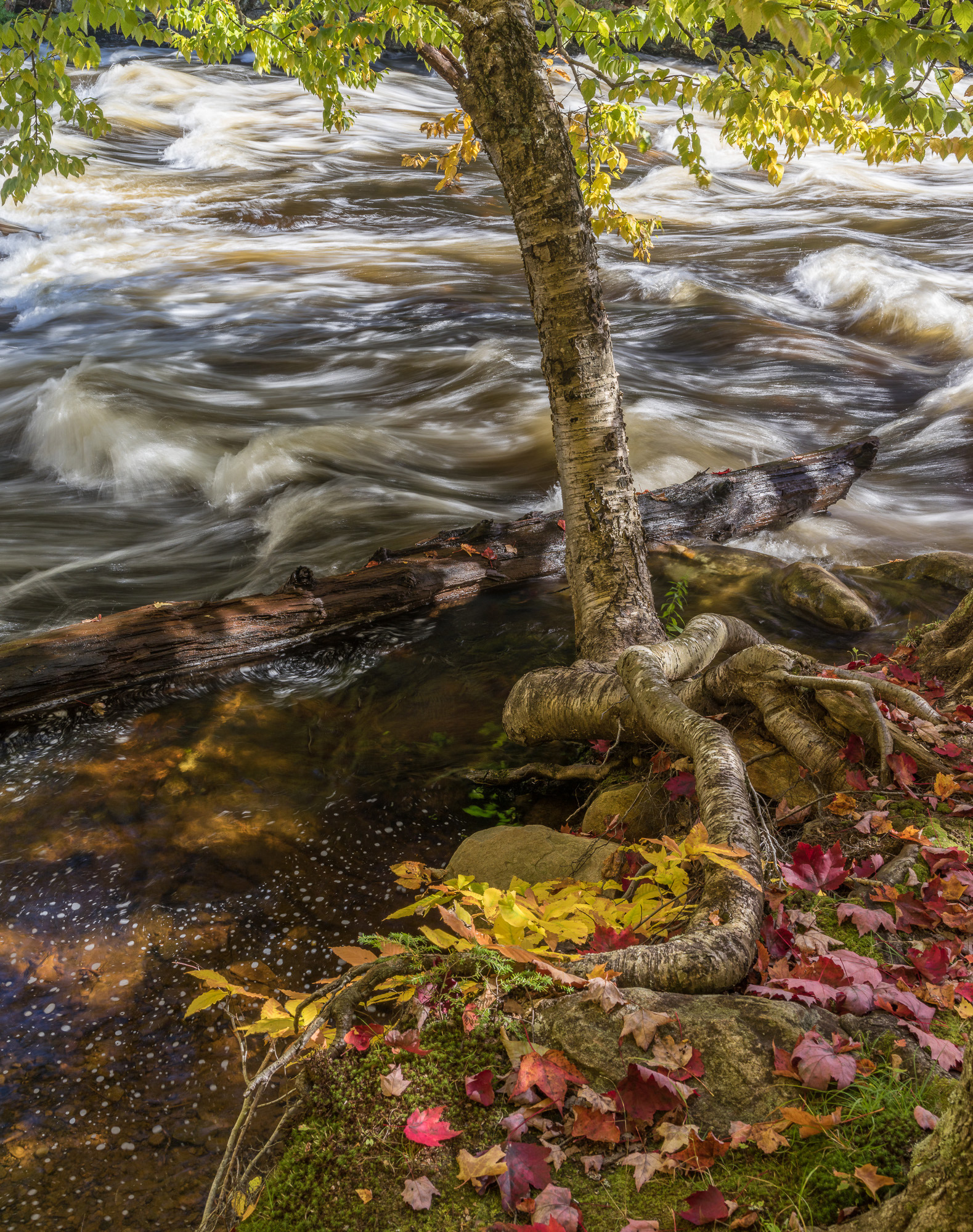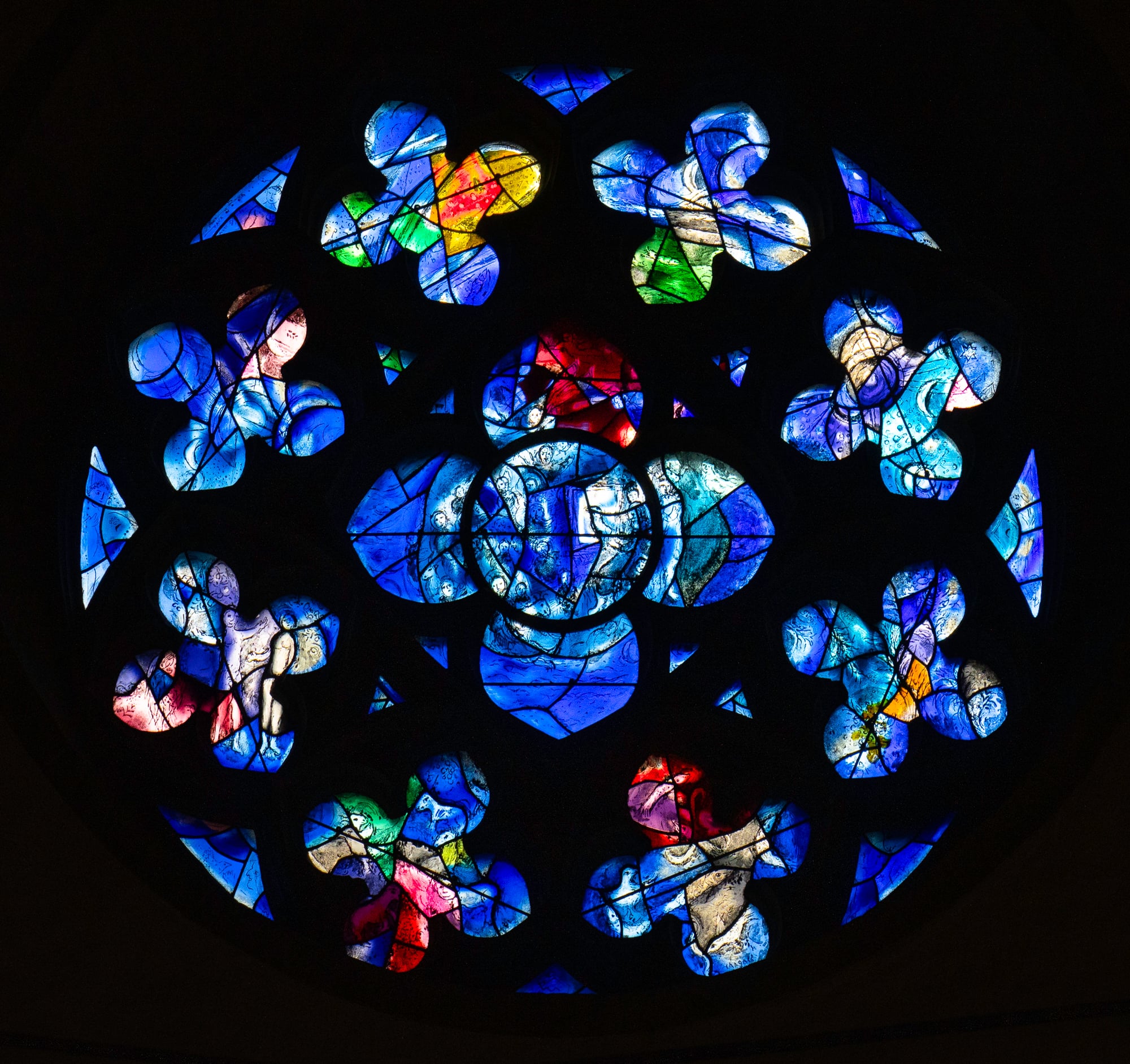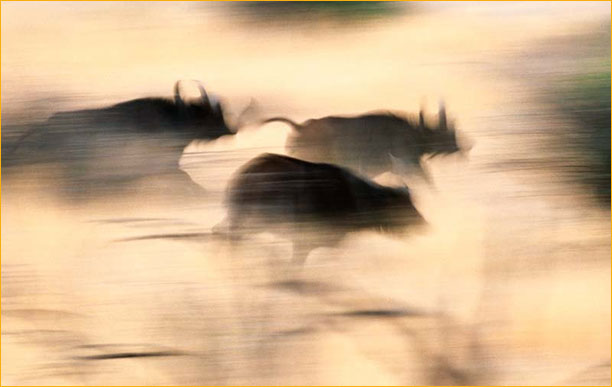
The silhouetted and blurred wildebeest in South Africa are defined by the negative space
When we confront a landscape, we are surrounded by a chaos of visual elements. The scene challenges us to extract a unique composition that encapsulates the character and emotional impact we sense at that moment. We need to get past the overt subject, the postcard view, to pick out the unobvious yet significant aspects.
I always approached photography from the point of view of an artist. Until the age of 22 I thought of myself as a painter, working on watercolors, studying composition and technique at the University of Washington, and internalizing the history of both Western and Eastern traditions. My interest in photography was an outgrowth of my climbing in the Cascades of Washington, a way to record my adventures, but when I committed to photography, I naturally applied my background to the new medium. I was uninterested in being a documentarian.
I found the European Impressionists and Post-Impressionists inspirational – Van Gough, Monet, Gauguin – while incorporating the innovations of the American Abstract
Expressionists as well: de Kooning, Jackson Pollock, and others. Among photographers I found a kindred spirit in Ernst Haas.
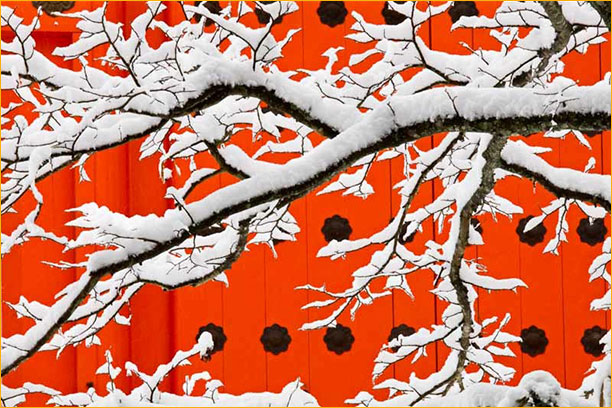
The structure of the red background of this Shinto temple is as important as the sweeping lines of the branches to the strength of the composition
Two lessons from art theory deserve emphasis.
Look at the structure of a composition, the balance of positive and negative space. That arrangement defines its underlying character. Even without an identifiable subject, a composition that heavily weights negative space conveys a sense of immensity or isolation. As an example, an image of a single figure on a dune where the sky covers 90% of the frame works this way, but it is the structure, not the subject, that creates the effect.
The negative space defines the positive. To get a feel for what I mean, draw an outline of the person against a blank background. The person is positive space, the background negative. Next, draw only the negative space, tracing lines around “empty” area so the person appears. When the positive and negatives spaces become co-equal in your imagination as you compose the shot, you have seized control as an artist and are not merely grabbing images but creating them. You are thinking in terms of form and line, not of things.
People come to photography from many disciplines. Many of the best nature shooters were biologists or doctors or climbers before they picked up a camera. Whatever your origins, once you begin to study the compositions of the masters, you will see opportunities in the real world, where blurred antelopes become brushstrokes, a foggy ridge becomes a Sumi painting, or leaves blowing in a snowstorm are a Seurat come to life.
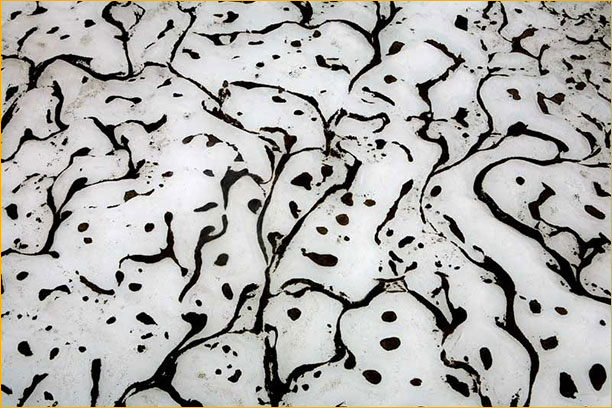
Windblown sediments atop layered riverside ice form floral patterns, a monochrome abstract
I am devoting the rest of this year to teachingTravels to the Edge Field Seminars, limited to groups of ten, and one three-day session at my Seattle gallery. I will spend little time on f-stops or pixels. I want to effect a transformation in the way photographers see, to revolutionize their approach to shooting in a matter of days, not years. I believe anyone can make that leap.
I am still striving to learn new and apply new ways to see, to stretch as an artist. These challenges drive me and make the art of photography meaningful in my life.
March, 2009
______________________________________________________________
Art Wolfe is one of the foremost photographers of the wild world and host of
Art Wolfe’s Travels to the Edge on public television.
To learn more, visitwww.artwolfe.com.
Read this story and all the best stories on The Luminous Landscape
The author has made this story available to Luminous Landscape members only. Upgrade to get instant access to this story and other benefits available only to members.
Why choose us?
Luminous-Landscape is a membership site. Our website contains over 5300 articles on almost every topic, camera, lens and printer you can imagine. Our membership model is simple, just $2 a month ($24.00 USD a year). This $24 gains you access to a wealth of information including all our past and future video tutorials on such topics as Lightroom, Capture One, Printing, file management and dozens of interviews and travel videos.
- New Articles every few days
- All original content found nowhere else on the web
- No Pop Up Google Sense ads – Our advertisers are photo related
- Download/stream video to any device
- NEW videos monthly
- Top well-known photographer contributors
- Posts from industry leaders
- Speciality Photography Workshops
- Mobile device scalable
- Exclusive video interviews
- Special vendor offers for members
- Hands On Product reviews
- FREE – User Forum. One of the most read user forums on the internet
- Access to our community Buy and Sell pages; for members only.







